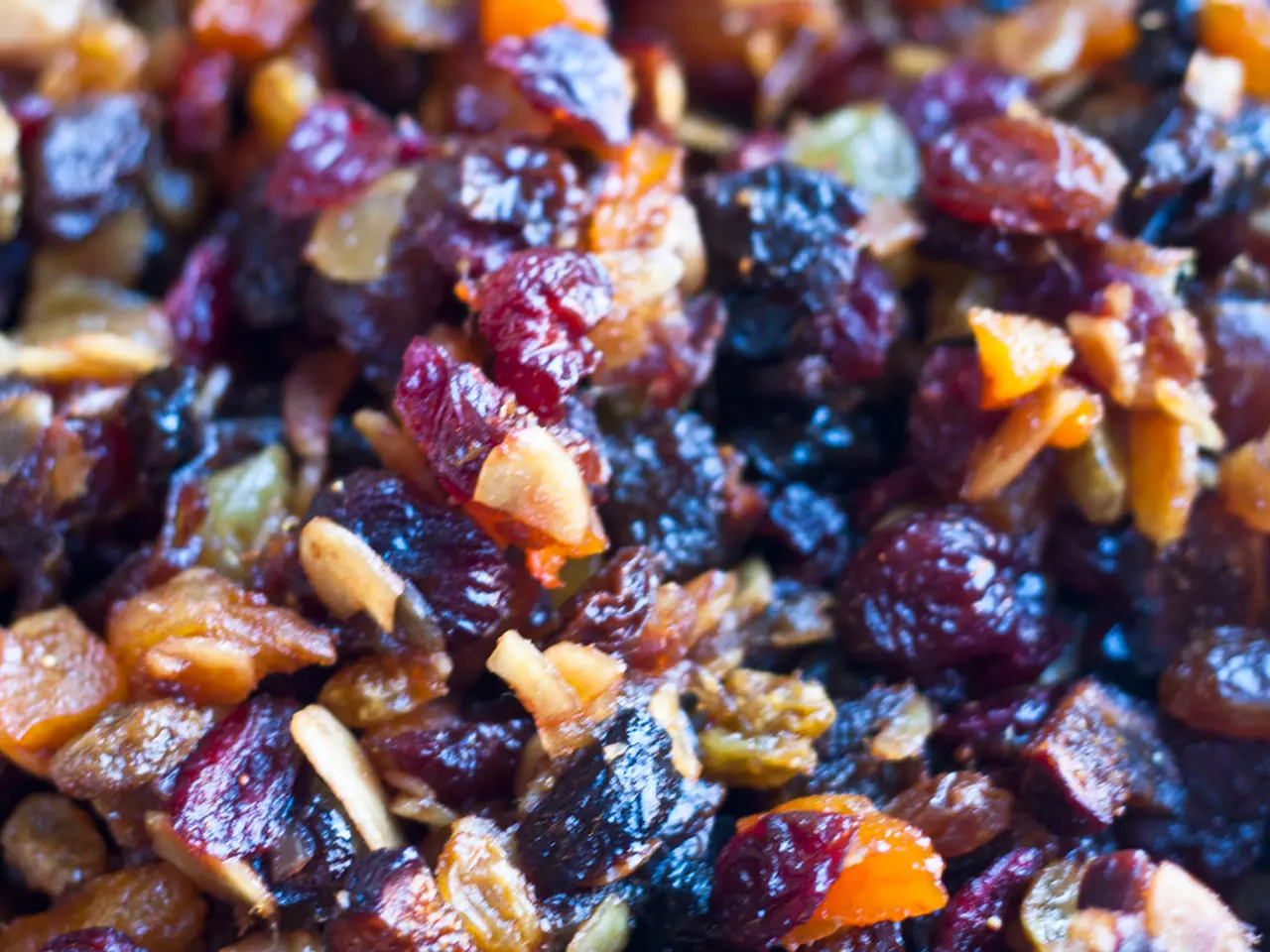Increase Your Fiber Intake for Better Health
In the quest for better health, fiber often takes a back seat. However, this indigestible carbohydrate found in plant-based foods plays a crucial role in maintaining a healthy lifestyle. Here's a breakdown of why fiber is essential and how to increase your daily intake.
A large Xtreme Wellness tortilla, for instance, provides 17 grams of fiber, thanks to the whole wheat and flax seed. This is a significant portion of the recommended daily intake.
Fiber comes in two main types: soluble and insoluble. Soluble fiber, found in oats, beans, apples, citrus fruits, and psyllium, helps regulate blood sugar and cholesterol levels. Insoluble fiber, on the other hand, adds bulk to the stool and speeds up digestion, found in whole-wheat bread, brown rice, vegetable skins, and popcorn.
To reap the full benefits of fiber, aim for 25 to 35 grams per day. This gradual increase can aid weight loss, regulate blood sugar, promote regular bowel movements, support heart health, and contribute to a healthy microbiome.
To achieve this, incorporate a variety of high-fiber foods into your diet. Fruits such as pears, strawberries, raspberries, blueberries, avocados, and blackberries, vegetables like broccoli, cauliflower, Brussels sprouts, and carrots, legumes such as kidney beans, lentils, chickpeas, black beans, and lima beans, and whole grains like oats, quinoa, whole wheat bread, and brown rice are all excellent sources.
Aim for one-third to one-half of your fiber intake from soluble fiber, found in oats, beans, apples, citrus fruits, and psyllium, to help regulate blood sugar and cholesterol. Include insoluble fiber in your diet to support regular bowel movements, found in whole-wheat bread, brown rice, vegetable skins, and popcorn.
A daily intake of 30-40 grams of fiber can reduce the risk of insulin resistance and developing type 2 diabetes by 20-30%. Chia seeds, for example, provide 4 grams of fiber and a healthy dose of omega-3 fatty acids.
Remember, increasing fiber intake gradually is key to avoid digestive discomfort. Drink plenty of water (at least 64 ounces per day) to support digestion.
In conclusion, boost your health by gradually increasing diverse fiber-rich foods in your diet, drinking plenty of water, and aiming for the recommended daily fiber intake. This simple change can bring about significant improvements in weight loss, blood sugar regulation, heart health, and digestive regularity.
[1] American Heart Association. (2018). How much fiber do men and women need? Retrieved from https://www.heart.org/en/healthy-living/healthy-eating/eat-smart/nutrition-basics/how-much-fiber-do-men-and-women-need
[2] American Diabetes Association. (2020). Nutrition: Carbohydrates. Retrieved from https://www.diabetes.org/healthy-living/food-and-fitness/food/what-can-i-eat/carbohydrates
[3] U.S. Department of Agriculture. (2021). Dietary Guidelines for Americans 2020-2025. Retrieved from https://www.dietaryguidelines.gov/resources/2020-2025-dietary-guidelines
[4] Mayo Clinic. (2021). Fiber: Essential for a healthy diet. Retrieved from https://www.mayoclinic.org/healthy-lifestyle/nutrition-and-healthy-eating/in-depth/fiber/art-20043988
- Traveling to general-news outlets and health-and-wellness publications could help you learn more about the benefits of incorporating fiber into your diet, such as its role in weight loss, blood sugar regulation, and heart health.
- In fitness-and-exercise environments, it's important to remember that a healthy lifestyle isn't just about physical fitness, but also includes proper nutrition like increasing your daily fiber intake.
- For those interested in science, studying the impact of soluble and insoluble fiber on our health could be an intriguing subject, with soluble fiber found in oats, beans, and citrus fruits having an effect on blood sugar and cholesterol levels.
- In terms of etiquette, it's essential to be considerate of others' dietary needs, such as offering food options high in fiber when hosting dinner parties or potlucks for better health and nutrition.
- As a character trait, being mindful of your health choices, like making a conscious effort to eat more fiber-rich foods, can reflect a commitment to self-improvement and overall well-being, contributing positively to your daily life and beyond.




